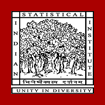Weighted Join Operators on Directed Trees
Article Type
Research Article
Publication Title
Complex Analysis and Operator Theory
Abstract
A rooted directed tree T= (V, E) with root root can be extended to a directed graph T∞= (V∞, E∞) by adding a vertex ∞ to V and declaring each vertex in V as a parent of ∞. One may associate with the extended directed tree T∞ a family of semigroup structures ⊔ b with extreme ends being induced by the join operation ⊔ and the meet operation ⊓ from lattice theory (corresponding to b= root and b= ∞ respectively). Each semigroup structure among these leads to a family of densely defined linear operators Wλu(b) acting on ℓ2(V) , which we refer to as weighted join operators at a given base point b∈ V∞ with prescribed vertex u∈ V. The extreme ends of this family are weighted join operators Wλu(root) and weighted meet operators Wλu(∞). In this paper, we systematically study the weighted join operators on rooted directed trees. We also present a more involved counterpart of weighted join operators Wλu(b) on rootless directed trees T. In the rooted case, these operators are either finite rank operators, diagonal operators or rank one perturbations of diagonal operators. In the rootless case, these operators are either possibly infinite rank operators, diagonal operators or (possibly unbounded) rank one perturbations of diagonal operators. In both cases, the class of weighted join operators overlaps with the well-studied classes of complex Jordan operators and n-symmetric operators. An important half of this paper is devoted to the study of rank one extensions Wf,g of weighted join operators Wλu(b) on rooted directed trees, where f∈ ℓ2(V) and g: V→ C is unspecified. Unlike weighted join operators, these operators are not necessarily closed. We provide a couple of compatibility conditions involving the weight system λu and g to ensure closedness of Wf,g. These compatibility conditions are intimately related to whether or not an associated discrete Hilbert transform is well-defined. We discuss the role of the Gelfand-triplet in the realization of the Hilbert space adjoint of Wf,g. Further, we describe various spectral parts of Wf,g in terms of the weight system and the tree data. We also provide sufficient conditions for Wf,g to be a sectorial operator (resp. an infinitesimal generator of a quasi-bounded strongly continuous semigroup). In case T is leafless, we characterize rank one extensions Wf,g, which admit compact resolvent. Motivated by the above graph-model, we also take a brief look into the general theory of rank one non-selfadjoint perturbations.
DOI
https://10.1007/s11785-023-01334-y
Publication Date
4-1-2023
Recommended Citation
Chavan, Sameer; Gupta, Rajeev; and Sinha, Kalyan B., "Weighted Join Operators on Directed Trees" (2023). Journal Articles. 3781.
https://digitalcommons.isical.ac.in/journal-articles/3781


